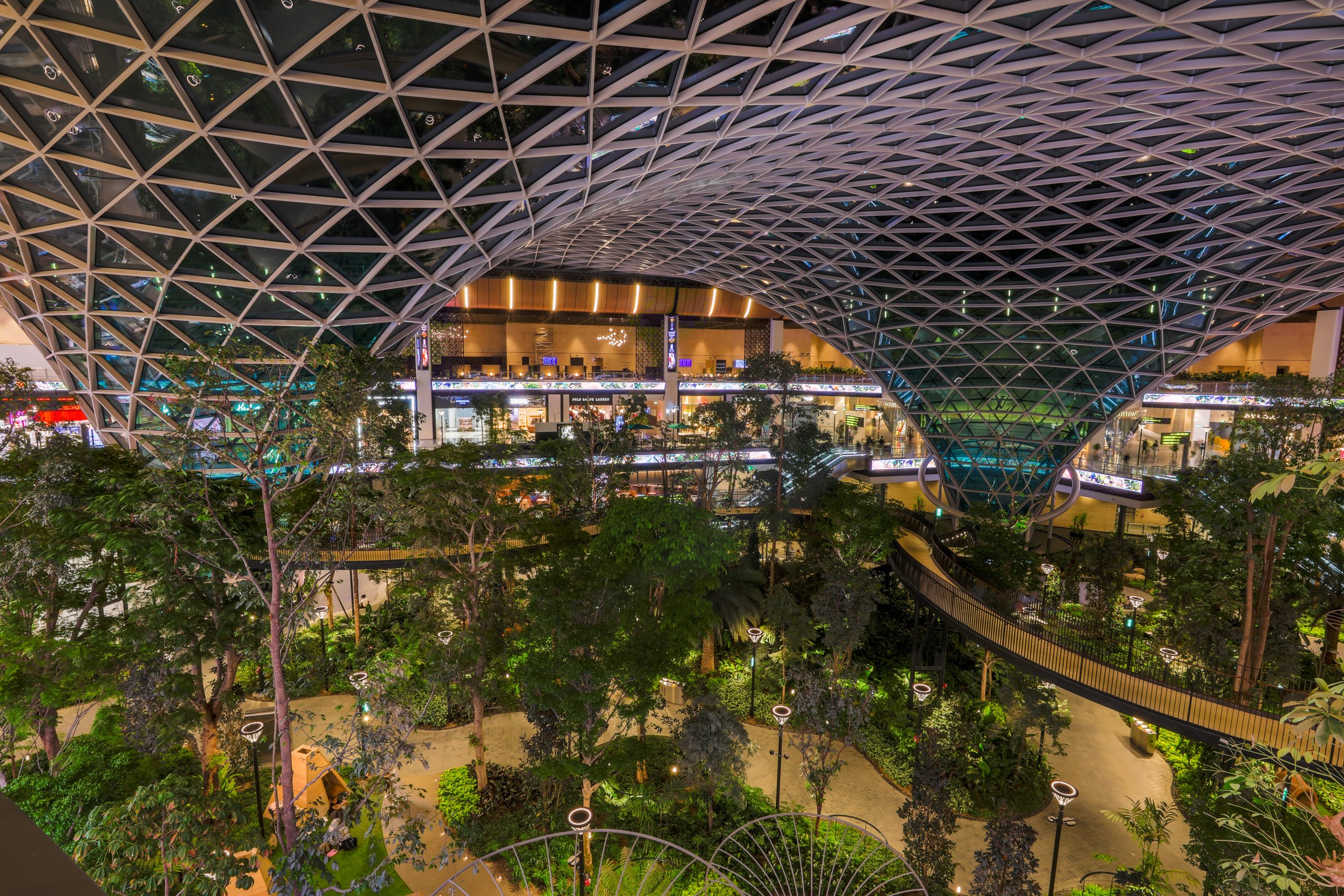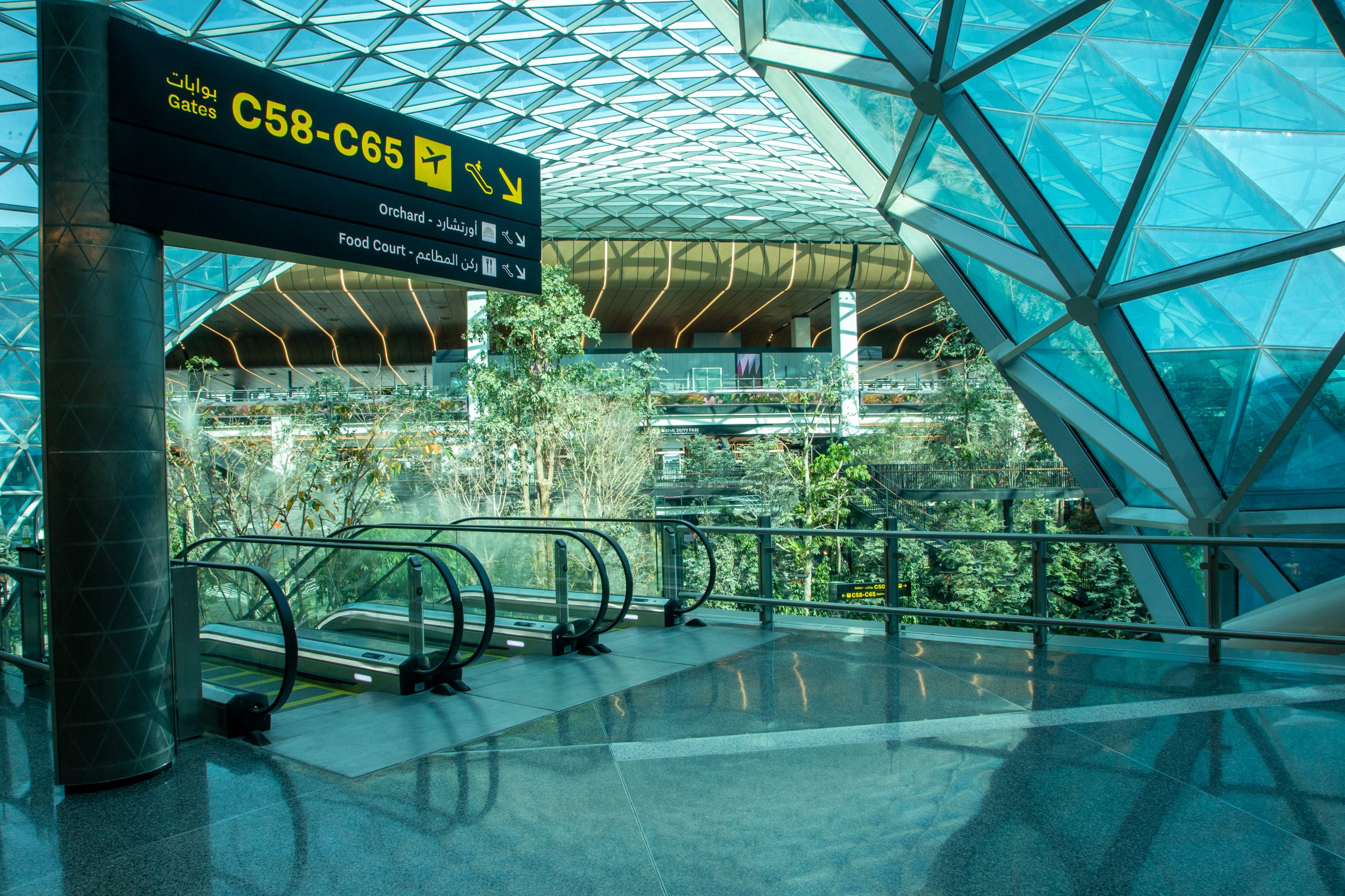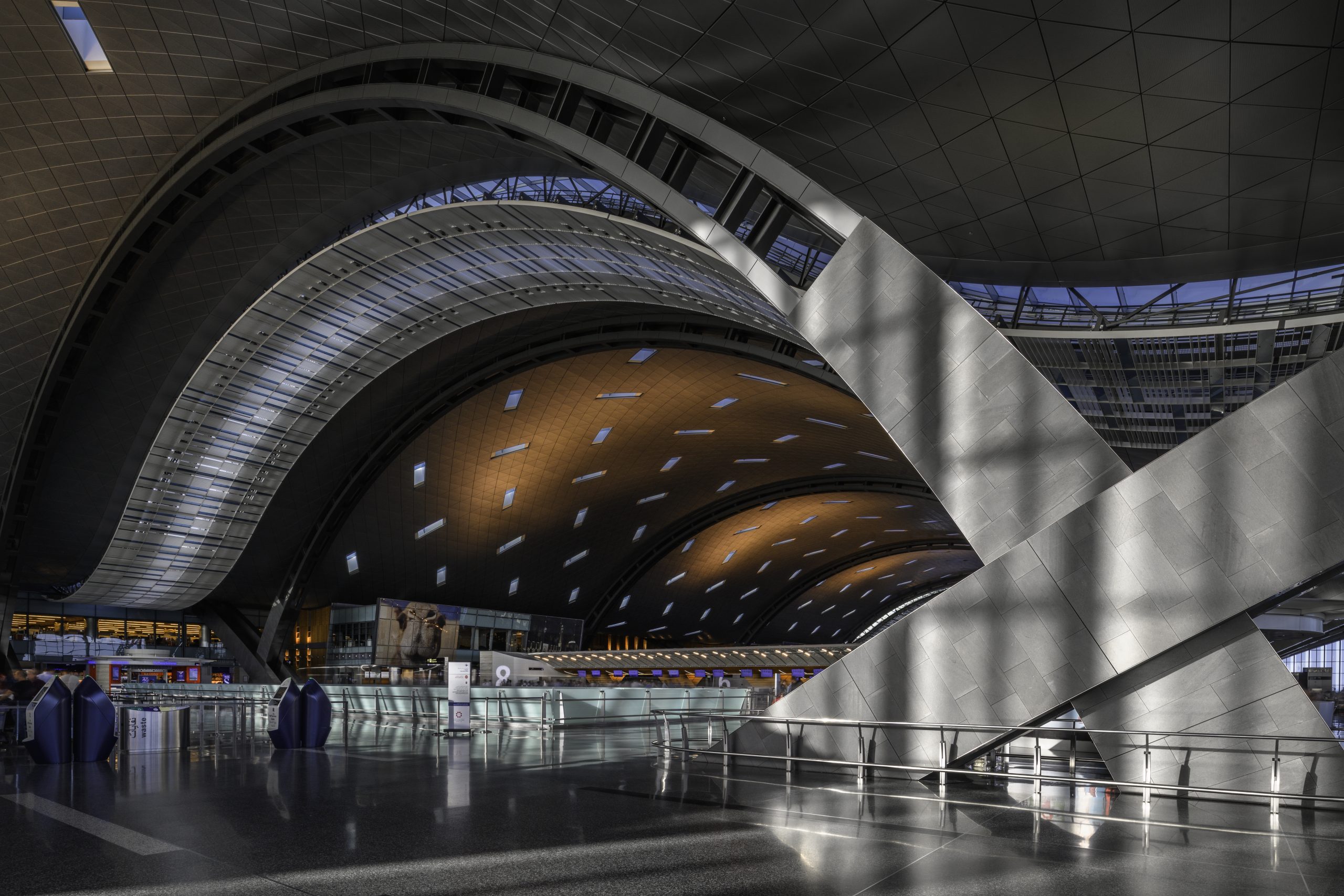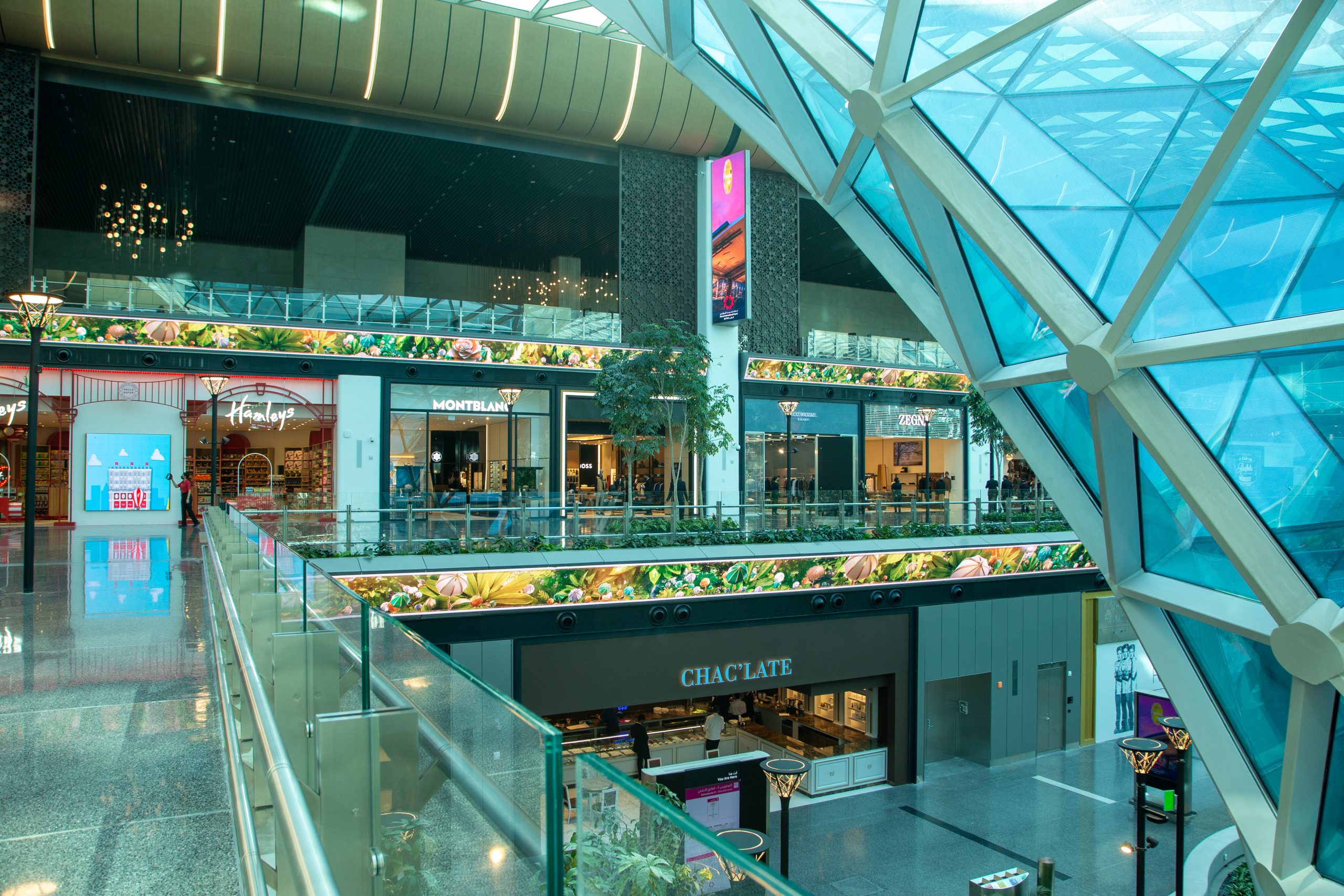Continuing to put Hamad International Airport on the map, beyond FIFA 2022
- Like
- Digg
- Del
- Tumblr
- VKontakte
- Buffer
- Love This
- Odnoklassniki
- Meneame
- Blogger
- Amazon
- Yahoo Mail
- Gmail
- AOL
- Newsvine
- HackerNews
- Evernote
- MySpace
- Mail.ru
- Viadeo
- Line
- Comments
- Yummly
- SMS
- Viber
- Telegram
- Subscribe
- Skype
- Facebook Messenger
- Kakao
- LiveJournal
- Yammer
- Edgar
- Fintel
- Mix
- Instapaper
- Copy Link
Posted: 7 March 2023 | Engr. Badr Mohammed Al Meer | No comments yet
International Airport Review Editor Holly Miles, sat down with Engr. Badr Mohammed Al Meer, Chief Operating Officer of Hamad International Airport to discuss the past year of success and how they intend to lead with this into 2023 and beyond.
It’s been an incredible year for Hamad International Airport, so could you give us an overview of the key events that have taken place that Hamad has had to prepare for?
2022 has been an exceptional year for Hamad International Airport. We welcomed over 35 million passengers at our ‘World’s Best’ facilities, and we unveiled phase A of our mega expansion plan which included nine projects of which at the centre is our tropical garden, ORCHARD and of course, as the Official Airport Partner for the FIFA World Cup Qatar 2022™, millions of football fans enjoyed memorable “world class” experiences with seamless operations.
Can you tell me a little bit about what makes the passenger experience at Hamad International “world class”?
Hamad International Airport constantly invests in introducing new experiences for passengers. Whether travelling to, from or through the airport, we make sure our facilities and services are of the highest standards which is achieved by reducing waiting and transfer time through investing in the latest technologies in terms of screening, safety and security; providing amenities that would meet passenger requirements; introducing bespoke F&B and retail options including a few industry firsts and creating an atmosphere whereby waiting doesn’t feel like waiting for passengers, making being at Hamad International Airport a memorable part of a traveller’s journey.
Hamad was the main airport welcoming passengers visiting Doha for the FIFA World Cup and was expected to handle between 34 and 36 million passengers in 2022, what preparations did you make in the run up to receive this increase of passengers?
Hamad International Airport welcomed over 35 million passengers in 2022 (35,734,243 to be exact), which is an increase of 101.9% year-on-year with overall aircraft movements growing to over 210,000 (217,875 to be exact), a 28.2% surge compared to 2021.
Through implementing the MATAR, the Qatar Company for Airports Operation and Management – Airport Operations Plan which was tested during the FIFA Arab Cup 2021, conducting a peer review by aviation authority bodies and organisations who have previously hosted similar scale events, Hamad International Airport was excited, prepared and ready to welcome FIFA World Cup Qatar 2022TM fans.
Additionally, the expansion which increased our airport capacity to 58 million passengers yearly, we introduced over 65 new F&B and retail options and a Remote Transfer Baggage Facility (RTBF) with a capability of storing over 10,000 bags at a time. The airport also expanded its existing Midfield Fuel Farm facility and with the construction of a new Western Fuel Farm facility was able to support operations at both Hamad International Airport’s Western Aircraft Stands, Main Terminal and Doha International Airport.
How did you embrace the “FIFA spirit” within your passenger experience in the run up and during the games?
For such mega scale events, building and sustaining a strong stakeholder network is integral to how well an entity can execute a successful experience, which we did through the Airports Operation Plan. We understood first hand that we will be expecting passionate football fans and since we shared their enthusiasm, were excited to welcome them to our airport and the State of Qatar.
Peak arrival and departure periods for passenger traffic were also identified to which we ramped up operations and work force allocations to ensure smooth, safe, secure and seamless travel experience.
We also introduced intensive FIFA-themed activations at the airport such as daily parades and viewing zones which aired the matches, just to name a few, as a way to further keep the football celebration on-going for passengers.
How are FIFA fans different to your normal passengers and how did you change the passenger experience to fit this passenger persona?
We expect a diverse passenger demographic who have different passions and interests. Although FIFA fans may be expected to have a deep passion for football, we wouldn’t categorise them as different. As an airport, we ensure we cater to all passengers that travel from, to or through our facility and have a more holistic view of meeting their needs 365 days a year.
During the FIFA World Cup Qatar 2022™ we further enhanced our airport operations and introduced more tailored experiences as a way to be integrated into their overall FIFA experience while in Qatar.


Credit: HIA.
What work did you do around airport operations, enhancing experience, security and working with your stakeholders to ensure you could deliver a seamless experience to your passengers?
Other than implementing the MATAR Airports Operation Plan – which defines in detail every process and procedure in place for a smooth delivery of the FIFA World Cup, it also included coordination with transport providers to ensure visitors have proper connectivity from and to the airport, the city and the stadiums. We worked closely with all stakeholders, identifying roles and responsibilities to ensure seamless teamwork.
We also had a dedicated Events Management Centre (EMC) which operated 24/7 by a diverse group of professionals representing all major airport stakeholders and partners. The EMC was also a source of accurate data collection, handling of information, coordinating with landside and airside process and a main decision-maker during the course of the FIFA World Cup.
The opening of our expansion in November 2022, increased the airport capacity to 58 million passengers per year and expanded our operations which reduced waiting time. The new transfer hall on Concourse C – Transfer Hall C – ensures minimum connection time for transfer passengers arriving at the North Plaza of the airport. The new transfer hall consists of 14 security lane, a central image processing room and the Smiths Detection’s HI-SCAN 6040 CTiX scanners.
We also invested in training and development for all teams which covered various aspects of passengers and resource handling.


Credit: HIA.
The World Cup has put Qatar on the map, but how are you ensuring that the publicity and recognition that your airport has received continues well past the games and that passengers return?
The World Cup indeed was a monumental event that brought the world to Qatar and Hamad International Airport was the first ground they would have touched upon when arriving to Doha by air. Although as an airport, we always and still have a global audience and continuously engage with them to ensure they have a seamless airport experience, through our marketing campaigns, airline and commercial partners and through aviation industry bodies and other stakeholders.
We continue to focus on growth, further enhancing our airport operations and customer experience that will support Qatar’s bid to host multiple mega-events.
Phase A of Hamad’s expansion plans were ready in time for World Cup, Phase B has now commenced, can you tell me what that entails?
Phase B of the expansion includes constructing two new concourses within the existing terminal, and a new western 300,000 square meters satellite concourse, converting the current 34 remote aircraft stands into contact gates with an automated people mover connection to the passenger terminal.
A new cargo terminal capable to handle 3.3 million tonnes of cargo per year located on a 300,000 square meters plot beside the existing Cargo Terminal.
With the second phase on the expansion, the airport capacity will increase to over 70 million passengers per year.


Credit: HIA.
How is the airport ensuring controlled and green growth?
Hamad International Airport is a part of the Qatar National Vision 2030 which consists of four themes: human, social, economic and environmental which we have endorsed and with environmental sustainability at the forefront of our business, we continue to showcase our commitment by improving carbon efficiency, reducing greenhouse gas emissions and managing wastewater.
This framework started since the construction of the airport whereby we excavated over 6.2 million cubic meters of soil, which was desalinated and reused as fill material. Additionally, the landscape around the airport consists of desert-adapted plants which are irrigated with recycled wastewater. The unique airport design promotes energy conservation needed for cooling and the walls of the passenger terminal are coated with solar reflective material and the roof is insulated, designed with overhang shading. With carbon dioxide sensors, we regulate air intake based on how many people are inside.
To achieve zero landfill, we are recycling organic compost and using it as fertiliser for landscaping at the airport, reducing the use of synthetic chemical fertilisers – this initiative intends to generate about 3,979 tonnes of organic compost annually. We have replaced all plastic water bottles at our airport hotels with eco-friendly water containers, all guestroom cards are now bamboo cards, adopted recycled paper for all hotel printing collaterals and use biodegradable material instead of plastic cups and bags.
We also have a dedicated wastewater treatment plant, which returns the treater water for irrigating the airport landscape features, successfully treating 100% of wastewater generated from the airport for reuse with zero discharge to the sea.
We constantly engage with airport stakeholders and commercial partners to reduce energy by implementing and introducing new technology and improved practices in order to meet our target to improve carbon efficiency per passenger by 30% by 2030, based on a 2015 baseline.
In recognition of our continual decrease in overall carbon dioxide emissions Hamad International Airport recently renewed its ACI ACA Level-3 of the Airport Carbon Accreditation and was awarded the International Standards Organisation ISO 14001 Environmental Management certification from international standards body British Standards Institution (BSI) Group and four projects from phase A of its expansion plan achieved a 4-star rating under the Global Sustainability Assessment System (GSAS) from Gulf Organization for Research & Development (GORD).
We talk a lot about the passenger experience but how do you ensure a good experience for your employees?
Our excellent service is only possible through our employees, who we invest in and ensure we empower them. Other than training and development courses, seminars, opportunities we also host a variety of internal activities to further engage with one another, introduce fun competitions that will encourage creativity such as photography competitions, conduct health and wellness awareness and much more.
The FIFA World Cup also opened a variety of opportunities to further celebration with each other and share our passion for the sport, such as having employees across the airport operations join in parades.


Credit: HIA.
Hamad was the first Middle Eastern airport to achieve the 5-star COVID-19 Airport Safety Rating, how important are COVID safety measures to travellers passing through your airport and how do you see this evolving in the future?
COVID-19 surely did change the way how airports functioned and since the wellbeing of our passengers is important, adopted COVID-19 policies and protocols that were in line with global and Qatar’s standards. We ramped up hygiene and sanitation procedures, introduced multiple methods to engage with passengers with minimal direct contact such as investing in new methods of screening, disinfectant robots, navigating the elevators were touchless, and retail and F&B outlets also encouraged a cashless and contactless transactions.
Hamad International Airport continued operations during the pandemic, and we will continue to follow global and local authorities’ direction on how best to protect passengers during their travel.
What is next for Hamad International in 2023 and beyond?
Focus on growing the airport with phase B of the expansion plan, invest in the latest airport innovations, grow our airline and commercial partners and our network, and introduce retail and F&B outlets that will only continue to enhance passenger experiences.
About the author


BADR MOHAMMED AL MEER
Engr. Badr Mohammed Al-Meer leads vital businesses of Qatar Airways Group including MATAR, Qatar Duty Free, Qatar Aviation Services, Qatar Aviation Catering Company, Qatar Distribution Centre, Dhiafatina and Real Estate. He is the Chief Operating Officer of Hamad International Airport (HIA), Doha, Qatar since June 2014, as well as the head of MATAR, the Qatar Company for Airports Management and Operation.
Engr. Al-Meer is an accomplished professional with more than 15 years of experience in aviation, construction and project management, and has held executive positions and board member seats in some of Qatar’s largest and most complex development projects.
Engr. Al-Meer holds degrees in Engineering from the American University of Beirut and the University of Colorado, bringing a wealth of business experience from the Middle East and sound technical knowledge in Engineering, Construction and Large Project Development, which in turn, translates to his expertise in the management of his growing scope within the Qatar Airways Group.
Related topics
Cargo, Passenger experience and seamless travel, Passenger volumes, Safety, Security, Social responsibility, Sustainability


















